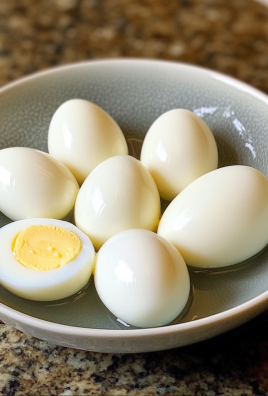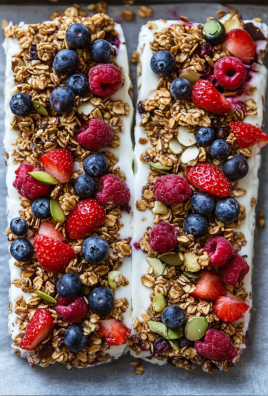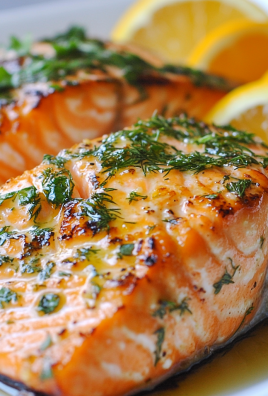
What Are Hard-Boiled Eggs
Hard-boiled eggs are a simple yet essential recipe, where eggs are cooked in their shells until both the white and yolk are firm. They’re incredibly versatile—used in salads, sandwiches, breakfast spreads, and snack boxes. Known for their high protein content and long shelf life when refrigerated, hard-boiled eggs are a staple in kitchens around the world.
Whether you’re prepping for the week or just craving a healthy snack, this recipe will help you get consistently perfect results every time.
You’ll love this easy technique that removes the guesswork and avoids common problems like overcooked yolks or impossible-to-peel shells. Plus, they’re ideal for low-carb diets and can be used in several recipes like deviled eggs, egg salad recipes, and meal prep ideas with eggs.
Why You’ll Love This Recipe
- Foolproof method that prevents green rings or rubbery whites
- Simple ingredients and tools you already have
- Multiple methods covered: stovetop, steam, and Instant Pot
- Great for low-carb egg dishes or healthy snacking
- Easy to peel every time, even with fresh eggs
This hard-boiled egg method is beginner-friendly and customizable. Once you master this, you’ll be able to whip up perfectly cooked eggs for any meal or dish, including our Chickpea & Veggie Buddha Bowl .
Preparation Phase and Tools to Use
Essential Tools and Equipment
- Medium or large saucepan or stockpot
- Slotted spoon
- Large bowl for ice bath
- Timer (kitchen or phone)
- Measuring cup for water
- Ice cubes for shocking eggs
Importance of Each Tool
Each tool contributes to consistency and ease:
- A saucepan ensures even water distribution around the eggs
- A slotted spoon makes transferring eggs safer and avoids cracks
- The ice bath halts the cooking process immediately, preventing overcooking
- A timer allows precision, which ensures repeatable results
Preparation Tips
- Use eggs that are 7 to 10 days old for easier peeling
- Store eggs pointy-end down before boiling to center the yolk
- Let eggs sit at room temperature for 10 minutes before cooking
- Choose medium or large eggs for best consistency
Ingredients
- 6 large eggs
- Cold water (enough to cover eggs by 1 inch)
- Ice cubes (for ice bath)
- Optional: 1 teaspoon salt or baking soda (for easier peeling)
This basic list works for all cooking methods. You can scale it up or down depending on how many hard-boiled eggs you want to prepare.
Step-by-Step Directions
Classic Boiling Method (Cold Start)
- Place the eggs in a single layer at the bottom of a saucepan.
- Add enough cold water to cover them by about 1 inch.
- Set the pan over medium-high heat and bring to a rolling boil.
- Once boiling, turn off the heat and cover the pan with a lid.
- Let the eggs sit in the hot water:
- 9 minutes for firm yolks
- 7 minutes for slightly jammy yolks
- Immediately transfer eggs to an ice bath for 10 minutes.
- Peel eggs under running cold water or store unpeeled in the fridge.
Steam Method
- Fill a pot with 1 inch of water and insert a steamer basket.
- Bring the water to a boil.
- Add the eggs to the steamer basket.
- Cover and steam for 12 minutes.
- Transfer eggs to an ice bath for at least 10 minutes.
- Peel and serve or store.
This method is especially effective for easy peeling and consistent results.
Pressure Cooker or Instant Pot Method
- Add 1 cup of cold water to the Instant Pot.
- Place the eggs on the trivet or rack inside the pot.
- Seal the lid and set to high pressure for 5 minutes.
- Let the pressure release naturally for 5 minutes.
- Quick-release any remaining pressure.
- Transfer eggs to an ice bath for 5–10 minutes.
- Peel and store.
This is the most hands-off and consistent method. Ideal for batch cooking or meal prep ideas with eggs.
Tips and Variations
- Add 1 tablespoon of vinegar to the water to help with peeling.
- A pinch of baking soda can also make shells easier to remove.
- For softer yolks, reduce cooking time by 1–2 minutes.
- Slightly crack the shell before the ice bath for quicker peeling.
Looking for what to do next with your perfect hard-boiled eggs? Try turning them into Grilled Salmon with Roasted Veggies or mix them into your Chickpea & Veggie Buddha Bowl.
Serving Suggestions
Hard-boiled eggs are extremely adaptable and can be served in numerous ways depending on your needs or preferences. Here are some ideas:
- Simply sliced and sprinkled with salt, pepper, and paprika
- Chopped and mixed into egg salad recipes
- Sliced on buttered toast or avocado toast
- Halved and seasoned with everything bagel seasoning
- Diced into tuna salad or chicken salad for extra protein
- Included in bento boxes or snack packs
- Used as a base for deviled eggs with your favorite filling
- Served alongside grain bowls or chopped into rice dishes
Their protein content, texture, and flavor make them ideal for both light snacks and hearty meals.
Common Mistakes To Avoid and How to Perfect the Recipe
Boiling eggs seems easy, but a few small mistakes can ruin your results. Here are the most common errors and how to avoid them.
Overcooking the Eggs
Overcooked eggs result in chalky yolks and a green-gray ring. Prevent this by:
- Timing your cook precisely
- Using an ice bath to stop residual heat
- Avoiding boiling eggs for more than 10 minutes
Using Fresh Eggs
Fresh eggs are harder to peel. Instead:
- Choose eggs that are 7 to 10 days old
- Store them pointy-side down before cooking
- Let them come to room temperature before boiling
Not Using an Ice Bath
An ice bath is essential for stopping the cooking process. Skipping this step leads to rubbery whites and dark yolks. Always cool your eggs immediately after boiling.
Cracked Shells During Cooking
Cracked eggs leak into the water. Prevent this by:
- Lowering eggs gently with a spoon
- Starting with cold water to minimize temperature shock
- Not overcrowding the pan
Forgetting to Set a Timer
Guesswork leads to inconsistency. Always set a timer when cooking. A few minutes too long or too short can change the yolk texture drastically.
Not Labeling Eggs
If you’re storing both raw and cooked eggs, always mark your hard-boiled eggs with a pencil or sticker. This avoids confusion when grabbing one for a snack or recipe.
Side Dish Recommendations
Pairing hard-boiled eggs with the right side dishes can turn a simple snack into a complete meal. Here are eight side ideas to complement them.
Avocado Toast
Creamy avocado on whole grain bread pairs perfectly with sliced hard-boiled eggs. Add chili flakes or lemon juice for extra flavor.
Fresh Garden Salad
Chopped eggs boost the protein content of a crisp vegetable salad. Combine with cucumbers, tomatoes, and a vinaigrette for balance.
Roasted Sweet Potatoes
The natural sweetness of roasted sweet potatoes contrasts beautifully with the mild, savory flavor of hard-boiled eggs.
Quinoa Bowl
Quinoa bowls topped with greens, nuts, and sliced eggs offer a nutritious and filling meal. Great for lunch or post-workout fuel.
Greek Yogurt and Berries
For breakfast, pair your eggs with a bowl of Greek yogurt and berries. The combination gives you protein, fiber, and healthy fats.
Baked Asparagus
Roasted or baked asparagus is a light and flavorful side. It adds fiber and balances out the protein-rich eggs.
Whole Grain Toast
A slice of seeded or whole grain toast provides complex carbs and pairs well with sliced or mashed eggs.
Sautéed Spinach with Garlic
A quick sauté of spinach and garlic adds greens to your plate and complements the eggs’ creamy yolk texture.
These side dishes ensure your hard-boiled eggs shine whether you’re planning a quick breakfast or a full meal.
Recipe Tips and Tricks
Mastering hard-boiled eggs comes down to a few small but impactful habits. These tips will ensure consistent results every time.
- Label your eggs: Use a pencil to mark the shells or store them in a separate container to distinguish them from raw eggs.
- Peel while slightly warm: Eggs peel more easily when they’re still slightly warm from the ice bath.
- Crack and roll method: Gently crack the shell and roll the egg on the counter to loosen the membrane before peeling.
- Use older eggs: Eggs that are about a week old tend to peel much easier than fresh ones.
- Steam for better results: Steaming often leads to easier peeling and fewer broken shells.
- Keep eggs in the shell until ready to use: This helps maintain freshness and texture.
- Avoid freezing hard-boiled eggs: It ruins their texture and flavor.
Hard-boiled eggs are a reliable addition to any meal prep plan. For example, they work perfectly in our keto deviled eggsand egg salad recipes.
Storage and Reheating
Proper storage extends the shelf life of hard-boiled eggs and keeps them safe to eat.
How to Store
- Unpeeled: Store in the refrigerator for up to 7 days in a sealed container.
- Peeled: Store in an airtight container with a damp paper towel for up to 3 to 4 days.
- Keep cold: Never leave hard-boiled eggs at room temperature for more than 2 hours.
Reheating Instructions
Hard-boiled eggs are usually served cold or at room temperature, but if needed:
- To reheat: Place in a bowl of warm water for 5–7 minutes.
- Avoid microwaving: Whole eggs can explode when microwaved, even if peeled.
Use them fresh out of the fridge in low-carb egg dishes, snacks, salads, or protein-packed lunchboxes.
Frequently Asked Questions
How do you boil eggs so they peel easily?
Use older eggs and give them an ice bath immediately after cooking. Peeling under running water also helps remove the membrane cleanly.
What is the trick to perfect hard-boiled eggs?
Control the timing, use a cold water start, and finish with an ice bath. Consistency comes from precision.
Is it better to boil eggs cold or hot?
Starting with cold water allows the eggs to cook evenly and reduces the chance of cracking.
How long do you boil eggs?
Let eggs sit in hot water off heat for 9–12 minutes, depending on the yolk consistency you prefer.
How to store hard-boiled eggs?
Store in the refrigerator, unpeeled for up to 1 week, or peeled for up to 4 days in an airtight container.
Can you eat boiled eggs every day?
Yes, boiled eggs are high in protein and nutrients. Moderation is key for cholesterol-sensitive individuals.
Why do eggs turn green after boiling?
A green ring forms when eggs are overcooked due to a reaction between sulfur in the white and iron in the yolk.
Should I use salt or vinegar in water?
Both can help make peeling easier. Vinegar softens the shell, and salt can help if any eggs crack during cooking.
What if the yolk is slightly gray?
It’s safe to eat. The gray color just indicates the egg was slightly overcooked.
Can I freeze boiled eggs?
No. Freezing boiled eggs affects the texture, making the whites rubbery and unpleasant.
Conclusion
Perfect hard-boiled eggs are simple but require attention to timing and technique. Whether you prefer the stovetop, steam, or Instant Pot method, using the right tools and following precise steps will give you consistent, peel-friendly results.
Remember to always use an ice bath, choose older eggs for easier peeling, and avoid overcooking. Once mastered, you’ll find endless ways to incorporate hard-boiled eggs into your meals, from egg salad recipes to deviled eggs and low-carb egg dishes.
Ready to take your eggs to the next level?
Try our keto deviled eggs or add them to your meal prep ideas with eggs. Don’t forget to bookmark this guide and share it with someone who struggles to make perfect hard-boiled eggs.
Explore more egg-focused recipes on our site and elevate your cooking with every batch.




Leave a Comment